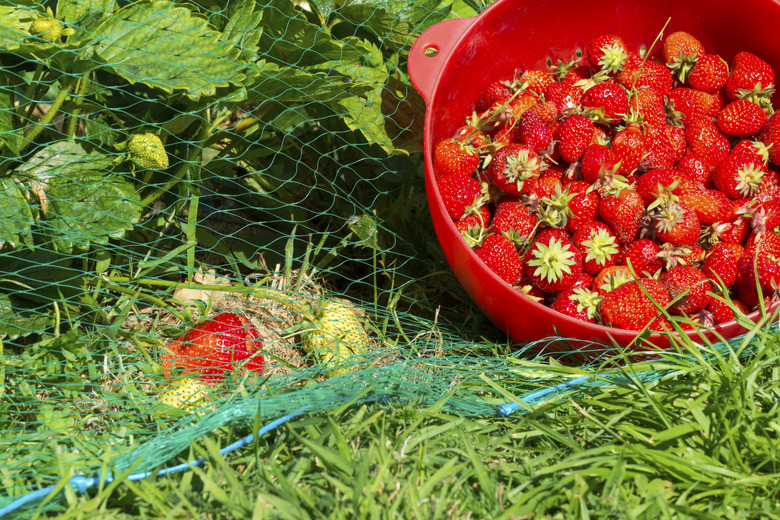How To Install Deer Netting
Gazing at deer foraging in green spaces is a delight to watch, but when they discover your vegetable garden or flower beds, their appeal quickly fades. Keep deer from ruining your hard work by installing deer netting. It is lightweight and you can put it up in an afternoon with fence posts and a few tools.
Gazing at deer foraging in green spaces is a delight to watch, but when they discover your vegetable garden or flower beds, their appeal quickly fades. Keep deer from ruining your hard work by installing deer netting. It is lightweight and you can put it up in an afternoon with fence posts and a few tools.
Lay Out the Site
Before you begin installing you deer netting, check with your local zoning commission for the maximum fence height it allows. Many codes limit fence height to 6 feet, but allow exceptions when damage-causing animals are involved. Choose where you want to erect the netting. For a vegetable garden, place it far enough away from rows that you can still walk around the ends to tend crops and do weeding. For ornamental beds, allow space for plants to grow and not poke through the netting, tempting deer.
- Gazing at deer foraging in green spaces is a delight to watch, but when they discover your vegetable garden or flower beds, their appeal quickly fades.
- For a vegetable garden, place it far enough away from rows that you can still walk around the ends to tend crops and do weeding.
Install the Posts
Install the corner posts first and run string between them to act as a guide to ensure line posts are installed in a straight line. Deer can jump about 8 feet high, so install posts and netting at least 8 feet tall. To keep the posts sturdy, one-third of the post should be sunk underground. This requires a post at least 12 feet long. Deer netting usually comes with metal sleeves that are hammered into the ground and metal rods inserted into them for fence posts. Space the posts about 15 feet apart or closer for a sturdier fence. Set on pair of posts 3 feet apart for a gate. For heavy soil, soaking the ground with water first makes pounding posts in easier. If you're not using a deer netting kit that comes with metal posts and sleeves, you can use wooden fence posts instead.
- Install the corner posts first and run string between them to act as a guide to ensure line posts are installed in a straight line.
Attach the Netting
Start by attaching the netting on one gate post. Use zip ties or stainless steel wire to attach the netting to the post at 2-foot intervals from top to bottom. For extra protection, use netting that is 8 feet 6 inches long and allow the extra 6 inches to lay on the ground on the outside of the enclosure. Stake it to the ground with garden staples every few feet. This keeps deer from going under the fence, and keeps other plant-loving critters out too. Stretch the netting around the outside of the posts, attaching it to each post, and ensuring it is tight and there are not gaps for them to squeeze through. Finish by making a gate — roll the excess netting onto a one-by-two-inch piece of wood 8 feet long starting at the end of the netting. Stop rolling when it is even with the gate post you began with and lash it to this gate post with an easy-to-remove string. The wood will keep netting vertical so you need only lash at the bottom, midway up the post, and as high as you can reach, ensuring there is no gap at the top.To keep deer from crashing into the fence, tie bright colored flagging tape, about chest high, around the netting.
- Start by attaching the netting on one gate post.
- The wood will keep netting vertical so you need only lash at the bottom, midway up the post, and as high as you can reach, ensuring there is no gap at the top.
Alternative Protection
If you just want to keep deer off a single shrub you can lay netting over it like a hairnet. Deer don't have sharp teeth so they can only nibble foliage that sticks through the holes. To protect a short row of vegetables or flowers, consider building a cage out of netting and two-by-twos and placing it over top of the row.
